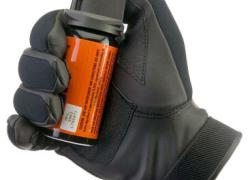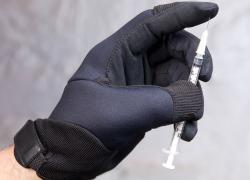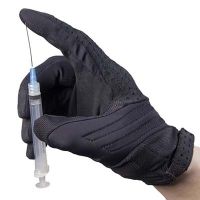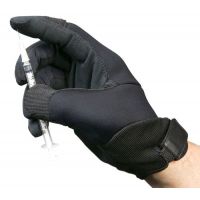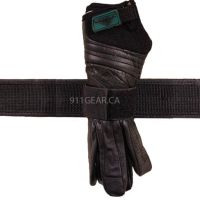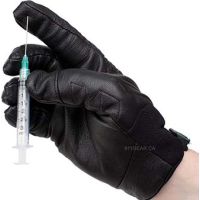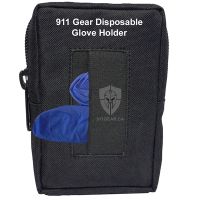Duty Gloves Part 3 - Types of Gloves and Maximizing Glove Life
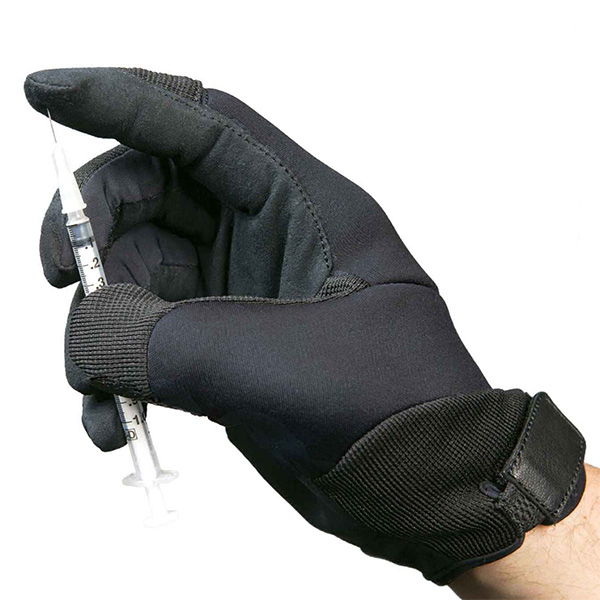
Part 3 - Glove Types - Glove Life
Gloves Types
It is very important that you read the manufacturers labels and web sites for information on the gloves you are issued or purchase. Different types, brands and model have different levels of protection. I cannot stress enough about doing your research before purchasing them. At 911 Gear we use duty gloves the duty gloves we sell. We can make suggestions. Call us lets discuss your needs.
Cut Resistant, Puncture Resistant or Waterproof / Hipora Liners
1) Cut resistant will protect against cuts with a certain amount of force but will not protect from stabs, jabs, body fluids, or punctures.
2) Puncture resistant will protect against a puncture (made with a certain amount of pressure). In some models have a reduced protection against cuts or punctures anywhere else on the gloves.
3) Waterproof Hipora lined gloves will protect against body fluids A neprene glove will give you good protection at a lower cost. Neoprene is waterproof
General Duty Gloves **
General duty gloves offer little or no protection against cuts or punctures. These gloves are not expensive usually run in the $20 - $50 + range.
Although designed for batting or golf, Officer do use sports gloves on duty. They use them to drive, apprehend, jump fences and for shooting. Gloves are normally made from a thin leather, mock leather or lycra, neoprene
The pros of the gloves are their inexpensive, usually light weight, breathable. They are cheap to replace if they are soiled or are lost. The cons are they offer minimal or no protection to your hand in the event of a scuffle, jumping over a fence or an encounter with a object that may cut you or body fluids.
Cut Resistant Gloves
Cut resistant gloves come in many different styles and protection levels. Cut resistant gloves are lined with different materials each giving different levels of cut resistant protection. Please keep in mind that there is material that is truly cut proof with the exception of chain mail used by butchers. The weight and limitations of these make them impossible to be used in a duty glove application.
KEVLAR - Designed by the Dupont Company, Kevlar is a polyblend of synthetic fibers woven together to protect the user against cuts without diminishing manual dexterity and is four times more cut resistant than leather. Kevlar will not diminish or wear out even after repeated laundering. Kevlar is the least protective of the current cut resistant gloves on the market today. These gloves are the lower end gloves and can run you between $30.00 and $70.00. Kevlar is yellow in color. If your lining is yellow its kevlar. Kevlar is not puncture resistant.
Kevlar is the registered trademark for a para-aramid synthetic fiber, related to other aramids such as Nomex and Technora. Developed at DuPont in 1965. Kevlar is a high high strength material was first commercially used in the early 1970s as a replacement for steel in racing tires. Typically it is spun into ropes or fabric sheets that can be used as such or as an ingredient in composite material components.
Currently, Kevlar has many applications, ranging from bicycle tires and racing sails to body armor because of its high tensile strength-to-weight ratio; by this measure it is 5 times stronger than steel on an equal weight basis. When used as a woven material, it is suitable for mooring lines and other underwater applications. A similar fiber called Twaron with roughly the same chemical structure was developed by Akzo in the 1970s; commercial production started in 1986, and Twaron is now manufactured by Teijin.
SPECTRA - Designed by Allied Signal, Spectra is a polyethylene fiber and is the strongest man-made fiber. Spectra is 8-10 times stronger than steel and 40% stronger than Kevlar approximately twice the cut resistance of Kevlar. The drawback to Spectra is loss of some manual dexterity and the cost is usually higher. These are the mid range gloves abd can cost anywhere from $60.00 to $100+. Spectra is white in color so a white liner means its made of spectra. Spectra is not puncture resistant.
- Spectra - Honeywell
40% lighter and stronger than Kevlar
8-10 times stronger than steel
Not a woven structure
More flexible than kevlar
exhibits superior resistance to chemicals, water and UV light. It has excellent vibration dampening, flex fatigue and internal fiber-friction characteristics.
Spectra® fibers are used in numerous applications, including police and military ballistic vests; helmets and armored vehicles; sailcloth; fishing lines; marine cordage and lifting slings; and cut resistant gloves and safety apparel.
Dyneema® is an UHMW-PE fiber. DSM invented it 20 years ago and it's been in production since 1990. The fiber is incredibly versatile with virtually limitless applications. For industrial gloves, we manufacture fibers by means of a gel-spinning process that combines extreme strength with incredible softness.
Produced by Akzo nobel
15 times stronger than steel on a weight-for-weight basis.
40% stronger than aramid fibers for superior protection in the workplace.
Able to float on water and does not absorb moisture.
UV resistant, you can expose it to the sun without affecting its performance.
Chemical resistant, performance is unaffected when exposed to most strong acids or bases.
An excellent conductor of heat - gloves made with the fiber feel cool to the touch. Read more
Launderable. Gloves with Dyneema® can be washed, even bleached, and therefore re-used.
Fully approved for use in the food industry - in both Europe and the US.
The exterior of cut resistant gloves can be made of leather, neoprene, spandex or a neoprene spandex combination. Some of the manufacturers have added rubber onto the gloves for cosmetics. Leather offers the wearer a bit more cut resistance than spandex or lycra gloves. The trade off with using leather gloves is that the bulkyness of the leather cuts down your ability to feel things while searching. Spandex or lycra or other material type gloves offer a a better ability to feel smaller items when searching and allow for more dexterity to the user especially when using firearms.
Puncture Resistant Gloves
Puncture resistant gloves are designed to resist being penetrated by sharp objects. In puncture resistant gloves the protection is usually found in the fingertips and palm area. Some gloves only have in fingertips. The protection is in the fingertips and there is some protection on the fingertips.
Puncture Resistant Materials
Puncture resistant gloves may or may not have cut resistance as well as puncture resistance. Some manufacturers make puncture resistant gloves with cut resistance in other areas of the glove. Research your glove before purchasing. The materials used in puncture resistant gloves are usually secret and wil not be revealed by manufacturers. The puncture material is not made of kevlar, spectra or dynema. All of those material are NOT puncture resistant.
Glove Life
The life of a pair gloves depends on many factors. Agencies will normally replace every 1-2 years. Some people replace their gloves every year and others will wear them until they are no longer wearable. Should the gloves develop any rips, tears or be exposed to any chemicals or body fluids you will want to replace them immediately. Cleaning instructions for gloves are available from each of the manufacturers. In the event of contamination by any body fluids you should immediately replace the gloves. As I said before the price of a gloves is a lot cheaper than a blood borne pathogen.

